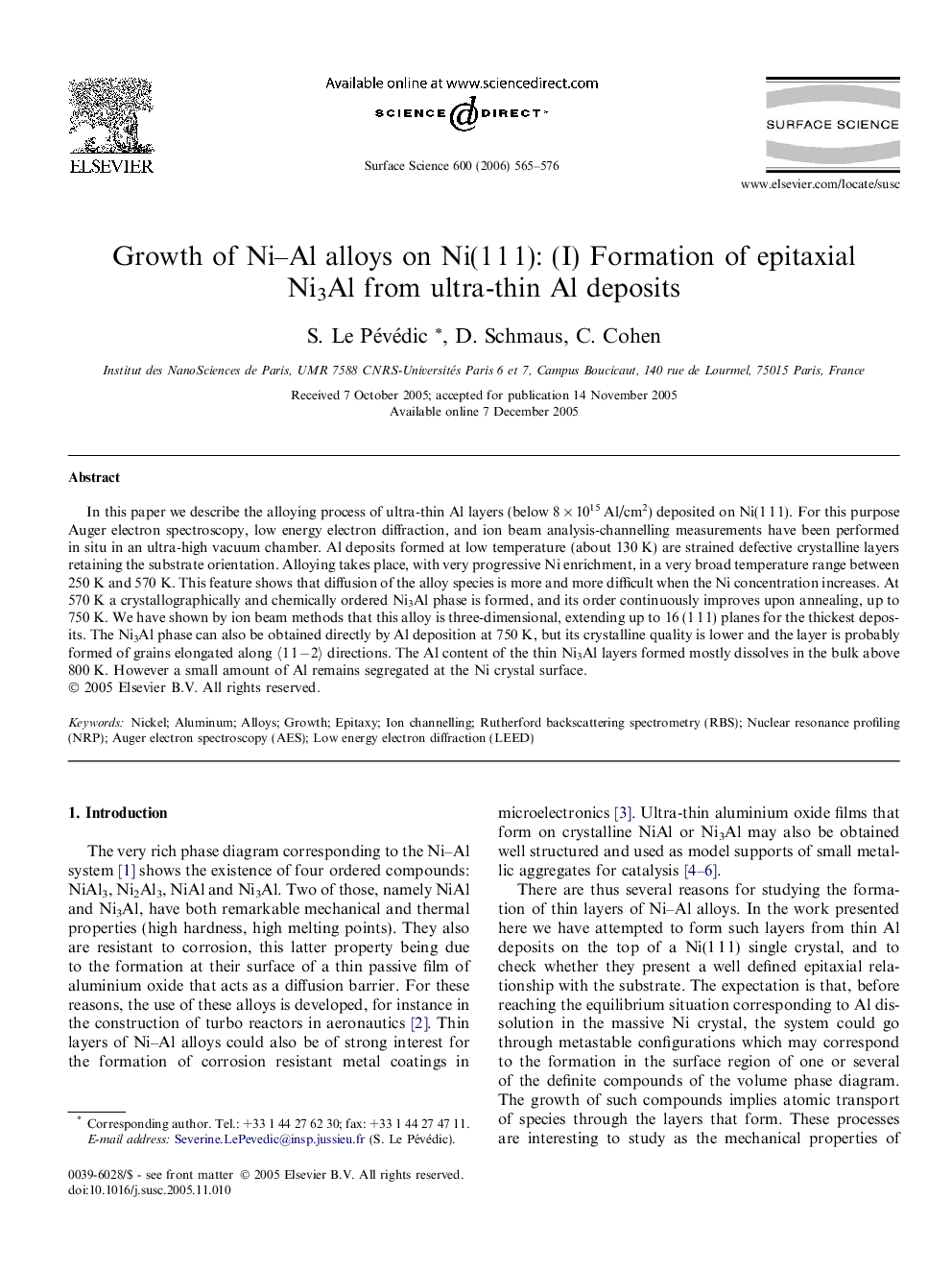| Article ID | Journal | Published Year | Pages | File Type |
|---|---|---|---|---|
| 5426862 | Surface Science | 2006 | 12 Pages |
In this paper we describe the alloying process of ultra-thin Al layers (below 8Â ÃÂ 1015Â Al/cm2) deposited on Ni(1Â 1Â 1). For this purpose Auger electron spectroscopy, low energy electron diffraction, and ion beam analysis-channelling measurements have been performed in situ in an ultra-high vacuum chamber. Al deposits formed at low temperature (about 130Â K) are strained defective crystalline layers retaining the substrate orientation. Alloying takes place, with very progressive Ni enrichment, in a very broad temperature range between 250Â K and 570Â K. This feature shows that diffusion of the alloy species is more and more difficult when the Ni concentration increases. At 570Â K a crystallographically and chemically ordered Ni3Al phase is formed, and its order continuously improves upon annealing, up to 750Â K. We have shown by ion beam methods that this alloy is three-dimensional, extending up to 16 (1Â 1Â 1) planes for the thickest deposits. The Ni3Al phase can also be obtained directly by Al deposition at 750Â K, but its crystalline quality is lower and the layer is probably formed of grains elongated along ã1Â 1Â â2ã directions. The Al content of the thin Ni3Al layers formed mostly dissolves in the bulk above 800Â K. However a small amount of Al remains segregated at the Ni crystal surface.
